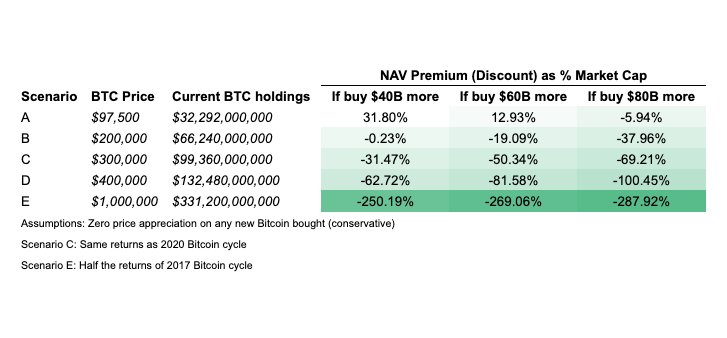<p>Central Bank
Digital Currencies (CBDCs) are digital representations of a country's fiat
currency issued and backed by the central bank. CBDCs are intended to be a more
efficient and secure form of payment, and they have the potential to have a
significant impact on the banking industry. </p><p>We will look at
the potential disruptions and opportunities that CBDCs may bring to the banking
industry in this article. </p><p>Disruptions
in the Banking Sector</p><p>CBDCs have the
potential to disrupt the banking industry in a variety of ways. Bank
disintermediation may be one of the most significant consequences. CBDCs could
allow consumers to store digital currencies directly with the central bank
rather than through commercial banks. </p><p>This would
reduce the importance of banks in the payment system and their ability to earn
revenue from traditional banking services. </p><p>Another
potential disruption that CBDCs could bring is increased competition. Consumers
may be less likely to use banks for payment services if they can hold digital
currencies directly with the central bank. </p><p>This could
result in increased competition among payment service providers, including
fintech and big tech companies. </p><p>CBDCs may have
an effect on bank deposits as well. Consumers may be less likely to hold funds
in traditional bank deposits if they can hold digital currencies directly with
the central bank. </p><p>This could
reduce the amount of funding available to banks for lending, potentially
leading to credit contraction and slower economic growth. </p><p>Possibilities
for the Banking Industry</p><p>CBDCs may cause
disruptions in the banking industry, but they also present numerous
opportunities. One of the most significant opportunities is for banks to use
CBDCs to provide new services. </p><p>Banks, for example,
could provide payment services that are faster, less expensive, and more secure
than traditional payment methods. CBDCs could also be used by banks to launch
new products, such as digital wallets or investment products. </p><p>Another
opportunity for banks is to increase financial inclusion. CBDCs could make
payment more accessible and affordable for underserved populations, such as
those who do not have access to traditional banking services. </p><p>Banks and the
central bank could collaborate to create CBDCs tailored to the needs of these
populations, potentially opening up new markets for banking services. </p><p>CBDCs may aid in lowering the cost of cross-border payments. Cross-border payments are
currently slow and expensive, with fees frequently exceeding 5% of the
transaction amount. </p><p>CBDCs may offer
a more efficient and cost-effective way to make cross-border payments,
potentially lowering fees and increasing transaction speed. </p><p>Adverse
Effects of CBDC Adoption</p><p>While CBDCs
present significant opportunities, they also present several barriers to
adoption. One of the most difficult challenges is ensuring that CBDCs are
secure and resistant to fraud. CBDCs must be built with robust security
measures to prevent hacking, forgery, and other forms of fraud. </p><p>Another
challenge is ensuring that CBDCs <a href="https://www.financemagnates.com/cryptocurrency/coins/can-central-bank-digital-currencies-replace-fiat-currencies/" target="_blank" rel="follow">do not jeopardize monetary stability</a>. CBDCs
must be designed so that they do not cause excessive volatility in the money
supply, which could result in inflation or deflation. </p><p>CBDC adoption
necessitates a significant investment in digital infrastructure. To support the
issuance and use of CBDCs, central banks and commercial banks must invest in
new technologies and systems. </p><p>Finally, the
use of CBDCs necessitates a clear regulatory framework. The regulatory
framework must ensure that CBDCs are secure, meet consumer needs, and do not
pose an undue risk to the financial system. </p><p>CBDCs and Policy: Mistakes to Avoid</p><p>As Central Banks'
Digital Currencies begin to emerge as the next hot topic, public opinion still
seems clearly divided, and it couldn’t be more polarized. There are those who
willingly accept it as the future of finance, and there are those who are
adamantly against it and will fight it with everything they got.</p><p>However, as
things being to move forward, what will really matter will be how policymaking
begins to reshape and reimagine the financial landscape.</p><p>As such, there
are some mistakes and pitfalls which many policymakers should try to avoid. We’ve
highlighted 3 of them: </p><p>Adapting
the silo mindset</p><p>CBDCs will
never exist in isolation. Accordingly, a policy which concerns Central Bank’s
Digital Currency, as well as any other digital asset, or the Payments landscape
itself should be coherent. Whether it’s in terms of modernizing payment systems,
stablecoins, or any other digital assets, cohesion should be the word of the
hour. </p><p>Trying
to do it all</p><p>While designing
a CBDC is no easy task, there are some objects that need to be prioritized over
others. Attempting to create a 'catch-all' currency will likely result in creating
something which isn’t optimized for particular tasks. </p><p>Downplaying
stakeholders and stakeholder sentiment</p><p>Whether it’s in
what concerns its design or CBDC issuance, decisions taken
will certainly affect both our financial system as well as our society itself.</p><p>As such, an
isolated decision-making process will certainly be harmful which is why
stakeholders matter. </p><p>Consequently, it’s
those very same stakeholders who should be in consultation so that the inclusiveness
both in terms of payments infrastructure and finance that governments,
fintechs, and other companies pride themselves on helping build, doesn’t go to
waste.</p><p>Wrapping
Up</p><p>CBDCs have the
potential to disintermediate banks and increase competition in the banking
industry. CBDCs, on the other hand, present significant opportunities for
banks, such as the ability to provide new services, improve financial
inclusion, and lower the cost of cross-border payments. </p><p>On top of that, CBDC adoption poses significant challenges, such as the need for strong security
measures, monetary stability, investment in digital infrastructure, and a clear
regulatory framework. </p><p>To summarize,
CBDCs' impact on the banking industry is complex and multifaceted. While CBDCs
may disrupt traditional banking services, they provide significant
opportunities for banks to provide new services and improve financial inclusion.
CBDC adoption requires a clear regulatory framework, investment in digital
infrastructure, and robust security measures. As CBDCs gain traction around the
world, banks will need to adapt and evolve in order to compete in an
increasingly digital world.</p>
This article was written by Finance Magnates Staff at www.financemagnates.com.

You can get bonuses upto $100 FREE BONUS when you:
💰 Install these recommended apps:
💲 SocialGood - 100% Crypto Back on Everyday Shopping
💲 xPortal - The DeFi For The Next Billion
💲 CryptoTab Browser - Lightweight, fast, and ready to mine!
💰 Register on these recommended exchanges:
🟡 Binance🟡 Bitfinex🟡 Bitmart🟡 Bittrex🟡 Bitget
🟡 CoinEx🟡 Crypto.com🟡 Gate.io🟡 Huobi🟡 Kucoin.




















Comments